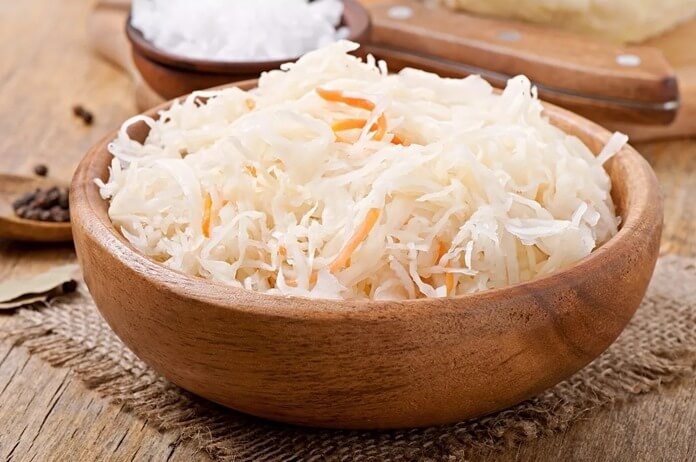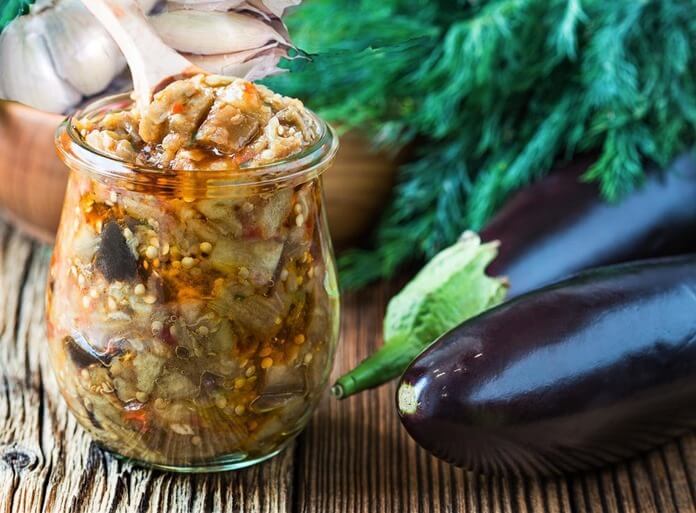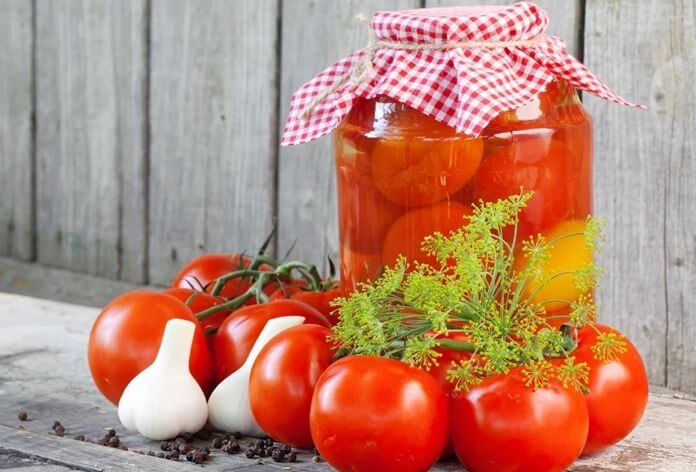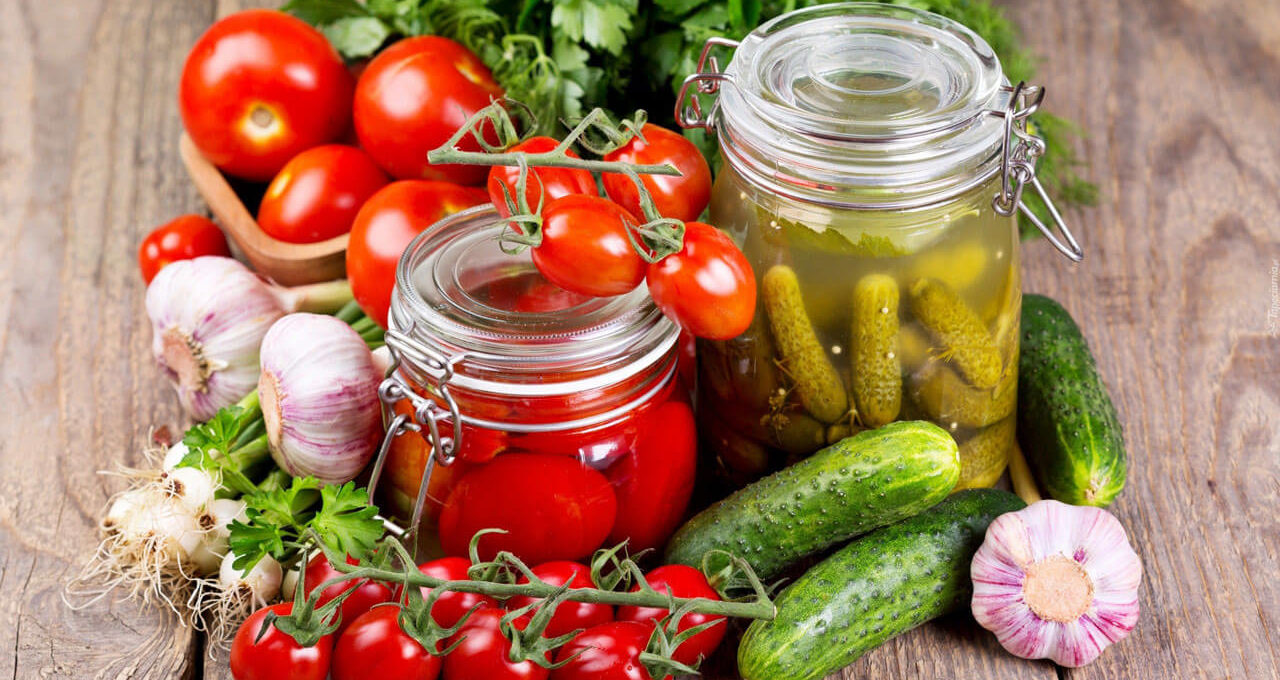Preserving for the winter is a tradition that allows you not only to preserve the tastes of summer, but also to fill the cold months with vitamins and aromas of fresh products. In conditions of changeable weather and frequently rising prices for fresh vegetables and fruits, home stocks become not only a tasty addition to the diet, but also an excellent way to save money. In this article, we will look at the 10 most popular products that are ideal for winter preparations. Find out which fruits are best preserved, what are their benefits and what methods of preservation will help to preserve the maximum taste and benefits.
10. Plums
 There are few fruits that can make such a wonderful jam – dense, velvety, delicious. You can make jam only from plums, or you can add apples, oranges, pears, nectarines and even juniper and tomatoes.
There are few fruits that can make such a wonderful jam – dense, velvety, delicious. You can make jam only from plums, or you can add apples, oranges, pears, nectarines and even juniper and tomatoes.
For plum lovers and sugar averse, there are pickled plums with garlic or a sour sauce made from them, which goes well with meat dishes. Plums are also frequent "guests" in compotes, usually mixed with cheaper chokeberries.
9. Cabbage
 Cabbage can be fermented both in its "natural" form, that is, only with salt, and with various flavor additives. Common companions of sauerkraut for the winter are:
Cabbage can be fermented both in its "natural" form, that is, only with salt, and with various flavor additives. Common companions of sauerkraut for the winter are:
- carrot;
- beet;
- apples;
- cranberry;
- cowberry;
- and even honey.
There is also the so-called "kroshevo" - when not only the white, but also the upper, green leaves of cabbage are fermented, which you can't always buy in the store (the cabbage is usually already completely peeled there). This dish is not eaten as a separate dish, but is usually cooked with shchi, which is called "gray" because of its color. And although this color is nondescript, in fact, "gray" shchi is very tasty.
If you don't like the taste of sauerkraut, you can marinate it alone or in the company of other vegetables (carrots, cabbage, garlic, etc.) or berries (cranberries or lingonberries). Or, in the "Georgian" version - with hot pepper. There is also a particularly vitamin-rich version that grandmothers like to feed their grandchildren - cabbage mixed with sweet peppers, apples, onions and grapes.
8. Currant
 One of the advantages of currants (in addition to their prevalence, frost resistance and relative unpretentiousness) is that they gel perfectly. That is why red currant jelly is one of the most popular dishes in all of Russia.
One of the advantages of currants (in addition to their prevalence, frost resistance and relative unpretentiousness) is that they gel perfectly. That is why red currant jelly is one of the most popular dishes in all of Russia.
However, currants can also be used to make compotes, jam, syrups (and then use them as a base for fruit drink), or simply strained with sugar. The canned unsweetened version of this berry is excellent as a flavoring additive to fish or meat.
7. Carrots
 Most often, carrots are not used as an independent ingredient for preparation, but in a set with other vegetables (many of which have already appeared in the top 10 most popular products for preparation in Russia) - cabbage, beets, sweet peppers, zucchini and eggplants.
Most often, carrots are not used as an independent ingredient for preparation, but in a set with other vegetables (many of which have already appeared in the top 10 most popular products for preparation in Russia) - cabbage, beets, sweet peppers, zucchini and eggplants.
And it is usually used solo as a vegetable caviar - for example, in the seasoning "Poltavskaya". Sometimes it is preserved in oil or vinegar and served as a side dish to meat.
6. Apples
 Another fruit (besides plums), which managed to break into the list of the most popular, tasty and healthy preparations for the winter. And for good reason. In terms of fertility and abundance, apples are akin to zucchini - they are also able to grow anywhere and in any way.
Another fruit (besides plums), which managed to break into the list of the most popular, tasty and healthy preparations for the winter. And for good reason. In terms of fertility and abundance, apples are akin to zucchini - they are also able to grow anywhere and in any way.
And in the fall, something needs to be done with this fragrant abundance. So they do: they make jams, compotes, distill apples into fragrant vinegar, cut the fruit and dry it in the oven as chips, and even roll up jars with pie filling in advance so as not to mess around later. They also pickle, ferment, and soak apples in kvass, rye malt, or honey water.
5. Eggplants
 In terms of popularity as an ingredient for winter preparations, "eggplants" are not far behind zucchini. Perhaps because these purple overseas guests are more capricious in cultivation.
In terms of popularity as an ingredient for winter preparations, "eggplants" are not far behind zucchini. Perhaps because these purple overseas guests are more capricious in cultivation.
The summer of 2019 was cold, which affected the ratings of many vegetable crops. Judging by search queries, citizens looked at the prices on the shelves, sighed and decided that a mammoth is a mammoth, but they want to eat right now.
As a result, the number of queries on the topic of “how to cook eggplants for the winter” decreased by 15%; currants and delicate strawberries also suffered.
What do they do with eggplants? They are fermented on their own, fermented together with cabbage (stuffed), marinated either simply in salted water with vinegar, or in a more sophisticated mixture of olive oil, rice wine, soy sauce and rice vinegar. And for beauty, they sprinkle with sesame seeds.
Another very popular dish is stewed eggplants with vegetables, either cut into rings or in the form of vegetable caviar.
4. Bell pepper
 Like carrots, peppers rarely appear as a stand-alone dish among preserves. Usually, they are invited guests, called upon to highlight the vegetable splendor of the preserve. With the exception of lecho.
Like carrots, peppers rarely appear as a stand-alone dish among preserves. Usually, they are invited guests, called upon to highlight the vegetable splendor of the preserve. With the exception of lecho.
Surprisingly, this dish, which is Bulgarian in origin, has won the ardent love of Russians. If you use a search engine with the words "bell peppers for the winter", the overwhelming majority of recipes will be about it - about lecho. Although peppers can also be simply marinated or even made into unsweetened jam mixed with hot peppers - for meat and poultry dishes.
3. Zucchini
 Oh, these zucchini. They are able to survive in the most unimaginable conditions and please their owners with a bountiful harvest, growing to enormous sizes. However, joy quickly turns to sorrow when the tired owners load the tenth bucket into the car, and the zucchini still do not end.
Oh, these zucchini. They are able to survive in the most unimaginable conditions and please their owners with a bountiful harvest, growing to enormous sizes. However, joy quickly turns to sorrow when the tired owners load the tenth bucket into the car, and the zucchini still do not end.
So we have to throw all our efforts into fighting the harvest – frying, stewing, boiling and, of course, preparing for the winter.
Usually zucchini is marinated in a mixture of water, sugar, salt and vinegar. There are also more sophisticated options, when vegetables or even berries (gooseberries, currants) are added to the zucchini. And if the zucchini is very young and has not yet matured, it can be salted - yes, just like cucumbers, using the same technology.
But the main advantage of zucchini is their ability to take on the taste of surrounding products, acting as a kind of ideal recipient. So thrifty housewives rejoice, giving zucchini the taste of mushrooms, sweet peppers or even gooseberries with lemon in the form of jam.
2. Cucumbers
 Interestingly, it turns out that a person’s place of residence can be determined by whether he or she preserves tomatoes or cucumbers for the winter.
Interestingly, it turns out that a person’s place of residence can be determined by whether he or she preserves tomatoes or cucumbers for the winter.
- The closer the cuisine is to the Pacific Ocean, the more popular the cucumber is.
- Beyond the Yenisei, the green and pimply vegetable reigns almost undivided in preparations.
- The only two renegade regions that break the overall green picture with bright red are Khabarovsk and Primorsky Krai. Although there, Signor Pomidor overtakes his lanky vegetable brother by a minimum distance.
- True, the European part of the country has its own dissidents. For example, in Crimea they prefer cucumbers - the only green island in the Red Sea. Maybe they are especially tasty among the Crimeans.
Usually, cucumbers are salted at full strength or to a "lightly salted" state for the winter. They are also used to prepare pickle soups - the green ones are grated, mixed with salt and garlic and rolled into jars.
1. Tomatoes
 The first place in the selection of the best products for winter preparations went to a valuable source of vitamins and antioxidants. In addition, it is quite easy to cultivate and grows almost everywhere. What do they do with it? And what don't they do!
The first place in the selection of the best products for winter preparations went to a valuable source of vitamins and antioxidants. In addition, it is quite easy to cultivate and grows almost everywhere. What do they do with it? And what don't they do!
Fermented: horseradish, dill, currant or cherry leaves, horseradish root, garlic (if you want it hotter, then a small cut hot pepper) are placed in a bucket, and brine is poured in. Then they are left for about two weeks at room temperature and then placed in jars or simply taken out onto a winter balcony.
Subjected to heat treatment: used as a base for seasonings, usually adjika. There are a great many adjika recipes – every family has its own. Some like it hotter and add more horseradish, others rely on hot peppers, and still others like the “apple” version – when tomatoes are minced with apples, carrots, sweet peppers and garlic.
If desired, you can add hot pepper. The resulting mixture is stewed in sunflower oil, brought to a boil and immediately poured into jars. Or they make an Indian seasoning - chutney, when tomatoes are rolled into jars together with apples, onions, raisins and fresh ginger.
They are marinated. There is plenty of scope for imagination here – tomatoes can be marinated either separately or stuffed (with cabbage, carrots, mushrooms). And you don’t even have to wait for the fruit to ripen – there are recipes for green tomatoes too.
Salt: Tomatoes are poured with a solution of salt mixed with sugar and dry mustard, rolled into jars and patiently wait for the New Year, when the red ones can be put on the table.
Dried: Recently, this method has become increasingly popular among cooks, beginners and not so much. Usually, cherry tomatoes are used for drying, which are cut in half, sprinkled with a mixture of salt, pepper and herbs (usually marjoram) and put in the oven. When the vegetables are well dried (the whole process takes from half a day to a day), they are poured with olive oil and sealed for the winter.
Bon appetit!














Оставить Комментарий